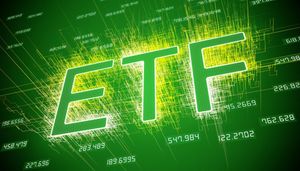
As October approaches, all eyes in the financial world are fixated on Tesla (NASDAQ: TSLA), whose upcoming third-quarter 2025 earnings report is poised to be a pivotal moment for the electric vehicle (EV) giant. The report, expected around October 22nd, arrives at a critical juncture for the company, with market sentiment a delicate balance of cautious optimism and underlying concerns. These results are not just about Tesla's performance; they are a bellwether for the broader EV market and could trigger significant shifts in investor confidence and industry dynamics.
The anticipation is palpable, as investors seek clarity on Tesla's ability to sustain growth, stabilize margins, and execute on its ambitious long-term strategies amidst intensifying competition and evolving consumer demand. The outcome of this earnings call will likely dictate the company's stock trajectory for the foreseeable future and provide crucial insights into the health of the global electric vehicle transition.
High Stakes for Tesla as Q3 Performance Under the Microscope
The buzz around Tesla's Q3 2025 earnings report stems from a confluence of factors that have shaped the company's recent trajectory. In September, the stock experienced a notable rally, pushing it into positive territory for the year, reportedly buoyed by CEO Elon Musk's significant $1 billion stock purchase—his first open-market buy since early 2020. This move was widely interpreted as a strong vote of confidence, momentarily shifting retail investor sentiment to "extremely bullish." However, analysts maintain that only flawless Q3 results can truly justify Tesla's premium valuation and sustain this momentum.
Key investor expectations revolve around robust delivery and production numbers, with estimates ranging from 465,000 to over 510,000 units, potentially setting a new quarterly record. This anticipated surge is partly attributed to a "pull-forward" of demand in the U.S. as consumers rushed to utilize the $7,500 federal EV tax credit before its September 30, 2025, expiration. Beyond deliveries, the market is eager to see stabilized or improved profit margins, especially after periods of aggressive price cuts. Reports suggest Tesla managed to stabilize gross margins at an impressive 19% in Q3, thanks to effective cost management and advancements in 4680 battery production. The performance of Tesla's energy generation and storage business is also under scrutiny, with expectations for continued strong growth and diversification potential, as energy revenue reportedly nearly doubled in Q3 with a 24.4% gross margin.
Despite these positive indicators, significant concerns temper investor enthusiasm. The looming expiration of the U.S. federal EV tax credit raises questions about Q4 demand, with a potential slowdown expected. Intensifying competition from traditional automakers like Volkswagen (XTRA: VOW3) and BMW (XTRA: BMW), as well as Chinese players such as BYD (HKG: 1211), is eroding Tesla's market share, which has fallen below 40% in the U.S. for the first time since 2017. Furthermore, the company's high valuation—trading at around 250 times earnings—means any slight miss on key metrics could trigger a sharp stock pullback. Investors are also closely watching updates on Tesla's ambitious ventures into AI, robotics (Optimus), Full Self-Driving (FSD), and the Cybercab, viewing these as long-term growth drivers that could redefine the company, though rising R&D costs for these projects could compress margins if not offset by substantial revenue.
A Ripple Effect Across the Automotive and Tech Landscapes
The outcome of Tesla's Q3 earnings report has the potential to send ripple effects across various sectors, creating winners and losers in its wake. A strong performance, particularly exceeding delivery and earnings expectations and demonstrating margin stability, would likely bolster investor confidence not just in Tesla, but in the broader EV sector. This could lead to a renewed interest in EV stocks, potentially benefiting other established EV manufacturers and emerging players with solid fundamentals. Companies involved in the EV supply chain, from battery manufacturers to charging infrastructure providers, could also see a positive uplift as the market interprets strong Tesla results as a sign of sustained EV adoption.
Conversely, a disappointing earnings report—a miss on deliveries, revenue, or a significant dip in margins—could trigger a widespread sell-off. Given Tesla's outsized influence, a negative reaction could drag down the entire EV market, impacting competitors who are already grappling with slowing growth and intense pricing pressures. Traditional automakers that have heavily invested in their own EV transitions might face increased skepticism if Tesla, the market leader, shows signs of struggle. Furthermore, the high valuation of NVIDIA (NASDAQ: NVDA) and other AI-related companies, which often benefit from the halo effect of Tesla's AI ambitions, could also experience pressure if Tesla's FSD or robotics updates fall short of expectations, highlighting the speculative nature of some of these long-term bets.
Beyond direct competitors, the energy sector could also be impacted. If Tesla's energy generation and storage business continues its robust growth, it could signal a broader shift towards decentralized energy solutions, benefiting companies in renewable energy and grid storage. However, if this segment underperforms, it might dampen enthusiasm for diversified tech-energy plays. The report will also be keenly watched by technology companies focused on autonomous driving and AI, as Tesla's progress or setbacks in these areas often set benchmarks and influence investment trends across the tech landscape.
Broader Implications: Navigating a Maturing EV Market
Tesla's Q3 earnings arrive at a pivotal moment for the global EV market, which, while still growing, is experiencing a deceleration in its pace of expansion. Global EV sales are projected to exceed 20 million units in 2025, yet the annual growth rate has slowed, signaling a transition from early adoption to a more mature, competitive phase. Tesla's performance will be a key indicator of how well a market leader can navigate this evolving landscape. Its ability to maintain margins despite pricing pressures and intensifying competition from both legacy automakers and aggressive Chinese brands like BYD will serve as a benchmark for the entire industry.
This event also highlights critical industry trends. The "pull-forward" of demand due to expiring tax credits underscores the fragility of EV adoption without sustained government incentives, a challenge many markets globally are facing. Tesla's focus on cost management and vertical integration, particularly in 4680 battery production, points to the increasing importance of supply chain control and efficiency in maintaining profitability in a competitive market. Furthermore, the growing emphasis on Tesla's AI, robotics, and energy segments indicates a broader industry shift towards integrated technology and energy solutions, extending beyond just vehicle manufacturing. Regulatory hurdles for FSD and robotaxi services, if addressed in the earnings call, could also shed light on the future of autonomous vehicle deployment and the regulatory frameworks that will govern it.
Historically, Tesla's earnings reports have often been market-moving events, capable of swinging investor sentiment for the entire tech and automotive sectors. Its unique position as both an automotive innovator and a technology disruptor means its financial health and strategic direction have wider implications than those of traditional carmakers. Any significant strategic pivots or adaptations Tesla announces in response to market conditions could set new precedents for how other companies approach the challenges of EV transition and technological diversification. The report will be a crucial data point in understanding whether the EV market is heading towards consolidation, intensified price wars, or a more diversified growth path driven by technological advancements beyond just electric vehicles.
What Comes Next: A Glimpse into Tesla's Future Trajectory
Looking beyond the immediate Q3 results, investors and industry observers will be keenly focused on Tesla's guidance for the fourth quarter of 2025 and beyond. The expiration of the U.S. federal EV tax credit on September 30, 2025, presents a significant short-term challenge, and Tesla's outlook on demand in the absence of this incentive will be crucial. Any indications of potential price adjustments, new market strategies, or production shifts to counter anticipated demand slowdowns will be closely scrutinized. The ramp-up of Cybertruck production and updates on the Model Y Juniper upgrades will also be key short-term indicators of manufacturing efficiency and product refresh cycles.
In the long term, attention will remain firmly on Tesla's ambitious ventures into AI and robotics. Updates on the progress of Optimus, the humanoid robot, and the development and monetization strategy for Full Self-Driving (FSD) and Cybercab services will be paramount. These initiatives represent Tesla's vision beyond traditional automotive manufacturing, and their successful execution could unlock new revenue streams and redefine the company's valuation. Investors will be looking for concrete timelines, milestones, and potential market opportunities that may emerge from these advanced technologies.
Potential strategic pivots or adaptations required for Tesla include navigating the intensifying competitive landscape, particularly in key growth markets like China and Europe. The company may need to accelerate its product refresh cycle, introduce more affordable models, or further diversify its revenue streams through its energy division to maintain its market leadership. Market opportunities may arise from advancements in battery technology, further integration of AI into vehicle features, and the expansion of its Supercharger network. Conversely, challenges could include regulatory hurdles for FSD, geopolitical tensions impacting supply chains, and sustained pricing pressures from competitors. Potential scenarios range from Tesla solidifying its position as a dominant tech-energy conglomerate to facing increased pressure from nimbler, cost-effective rivals.
Conclusion: A Defining Moment for the EV Pioneer
Tesla's upcoming Q3 2025 earnings report is undeniably a defining moment, not just for the company itself but for the broader electric vehicle industry. The report will provide critical insights into how the EV pioneer is navigating a maturing market characterized by intensifying competition, evolving consumer incentives, and the delicate balance between aggressive growth and sustainable profitability. Key takeaways will center on Tesla's ability to maintain strong delivery numbers, stabilize profit margins, and demonstrate tangible progress in its ambitious AI and robotics initiatives.
Moving forward, the market will assess Tesla's resilience in the face of post-tax credit demand shifts and its strategic responses to a rapidly evolving competitive landscape. Investors should closely watch for guidance on Q4 2025, updates on Cybertruck and Model Y production, and any new developments in FSD and Optimus. The performance of its energy segment will also be a crucial indicator of its diversification success. Ultimately, this earnings report will serve as a barometer for the company's long-term vision and its capacity to remain at the forefront of automotive and technological innovation. The coming months will reveal whether Tesla can continue to defy expectations and solidify its position as a multifaceted technology and energy leader, or if the pressures of a more competitive market will necessitate a recalibration of its growth narrative.
This content is intended for informational purposes only and is not financial advice


















